Industrial Design & Spatial Strategies
SS 2023 - MUTHESIUS KUNSTHOCHSCHULE KIEL
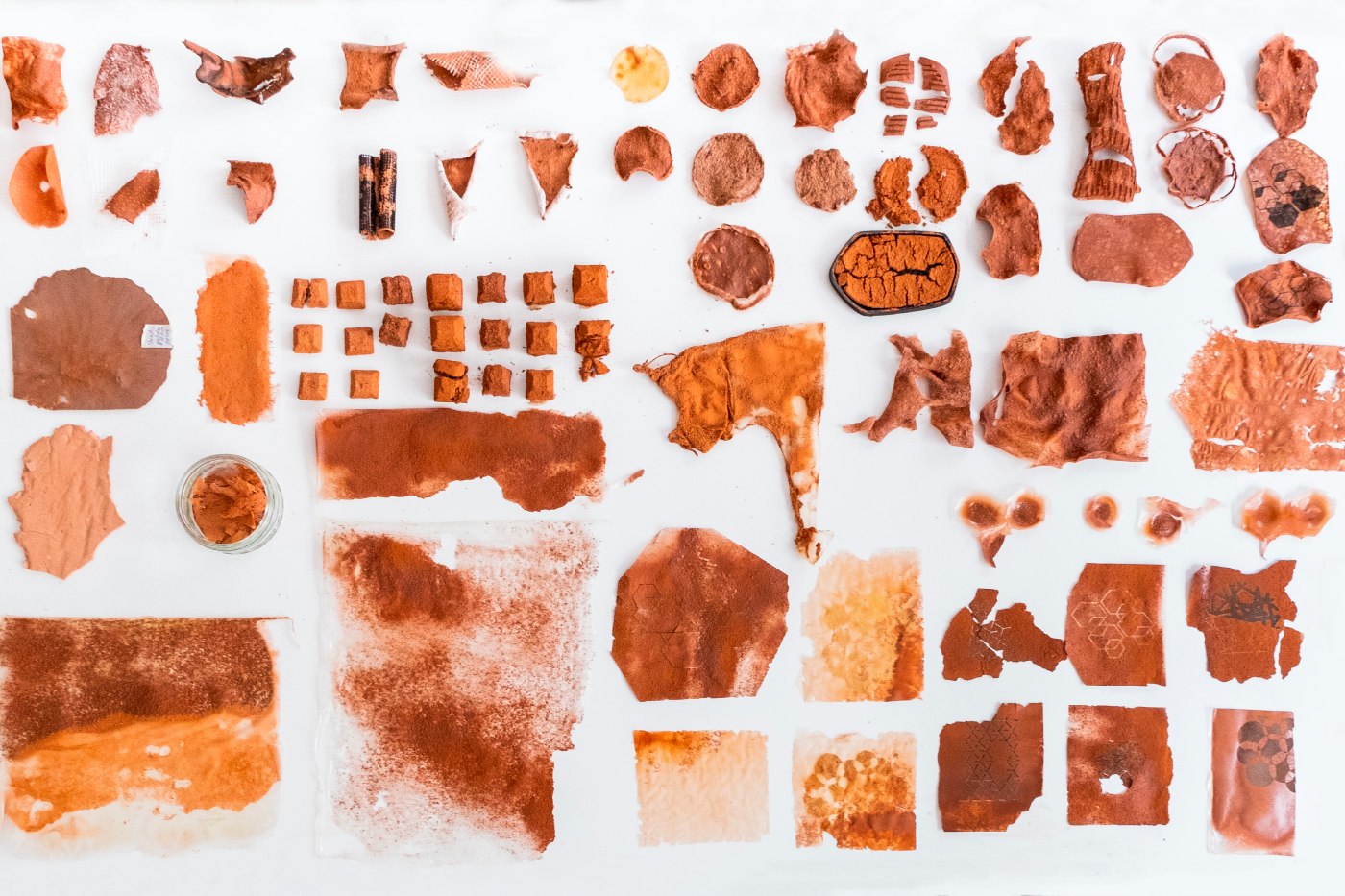
RETHINKING BRICKS – MATERIAL RESEARCH & DESIGN
Interdisciplinary elective at the Muthesius Academy of Fine Arts Kiel in the summer semester 2023 in cooperation with the Material Lab (Industrial Design) with students from Industrial Design and Spatial Strategies.
The enormous amount of construction waste and the high energy consumption for the production of bricks require a rethink – construction waste must be seen as a source of raw materials (urban mining).
Brick dust and other residual materials from brick production and recycling should become the basis for the development and design of new materials.
Initially, the raw materials provided should be freely experimented with: How can they be used? What are their strengths and weaknesses? What potential do they offer that has not yet been utilized? Which methods are suitable for generating new materials? How can an aesthetical, ecologically meaningful, new material be created? The scale and type of the „product“ are initially left up to the participants: conceivable applications include interior/architectural design, furniture design or product design.
In addition to the practical-experimental focus, the goal of the course was to further develop the first raw materials into functional and aesthetically appealing results and to formulate design application principles.
This course was supervised by Dr. Kerstin Mayer and Dipl.-Des. Melissa Acker.
Teaser photograph: Franziska Rausch & Lea Matuschzyk
©️ Materiallabor Muthesius Kunsthochschule Kiel

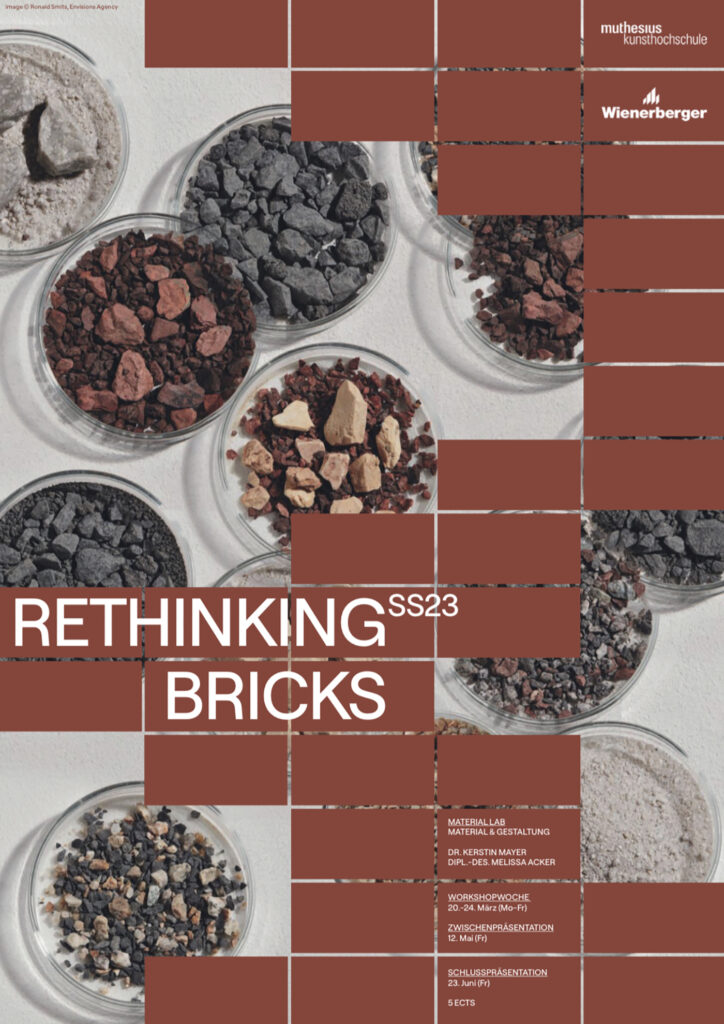
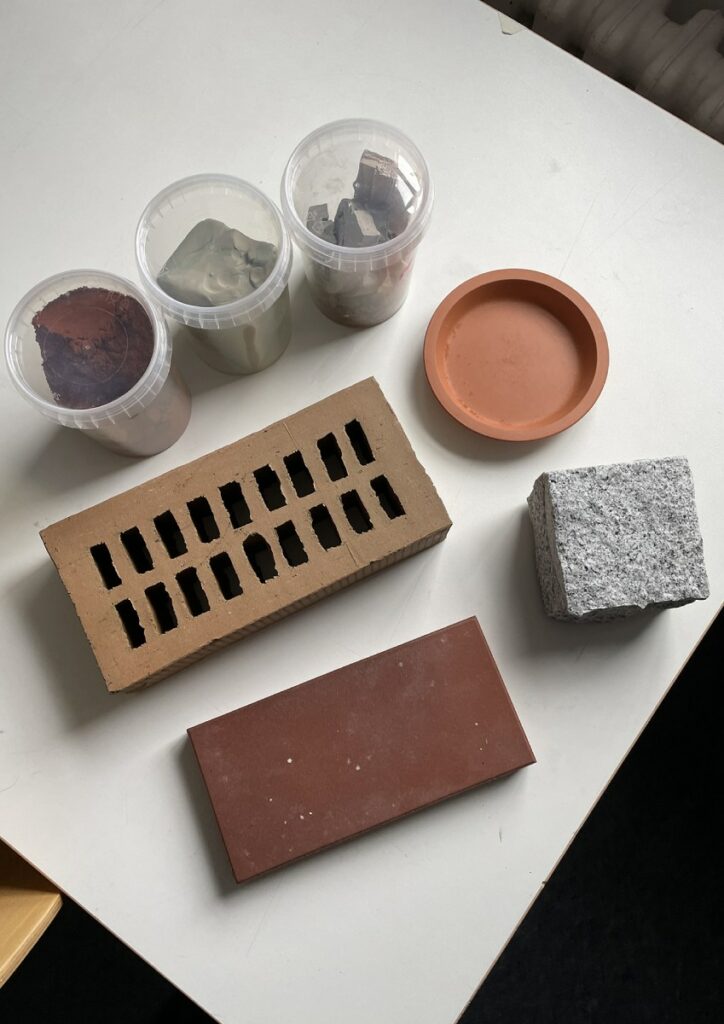
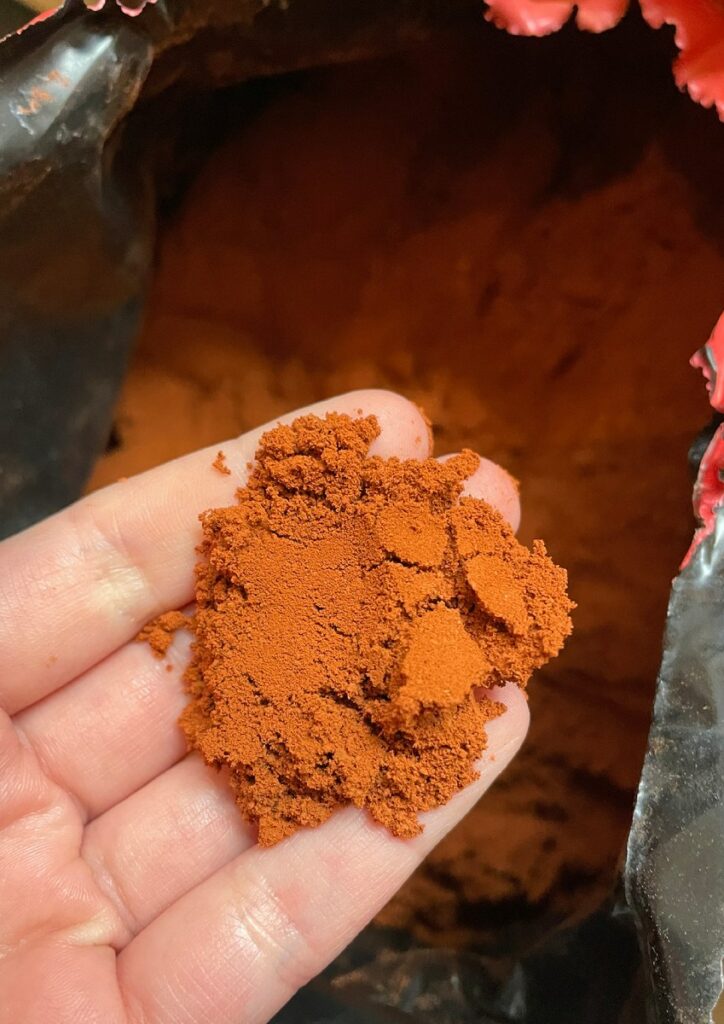
Brickston Sideboard – Janne Klass (Industrial Design B.A.)
The project „brickston“ deals with the decorative use of brick dust in furniture fronts. In various experiments with brick dust and the ingredients salt, water, oil and wheat flour, an attempt was made to obtain a stable mass. To achieve a stronger bond and structure, experiments were conducted with cellulose and papier-mâché made from egg carton. In each case, the mass was mixed, pressed into shape, and dried. The goal was to obtain a solid material to implement the concept of decorative furniture fronts.
The final concept is a simply constructed sideboard. The individual parts can be delivered compactly (flatpack) and assembled by the customer with a few easy steps. A waxed steel frame made of two stringers is held together by screws and two cross braces. Two FSC-certified spruce boards serve as the top and bottom of the sideboard. Four U-profiles are screwed to the shelves at designated points, and two cellulose-salt-dough boards are slid into the U-profiles. At the end of its life, all parts of the sideboard can be disassembled and recycled again.
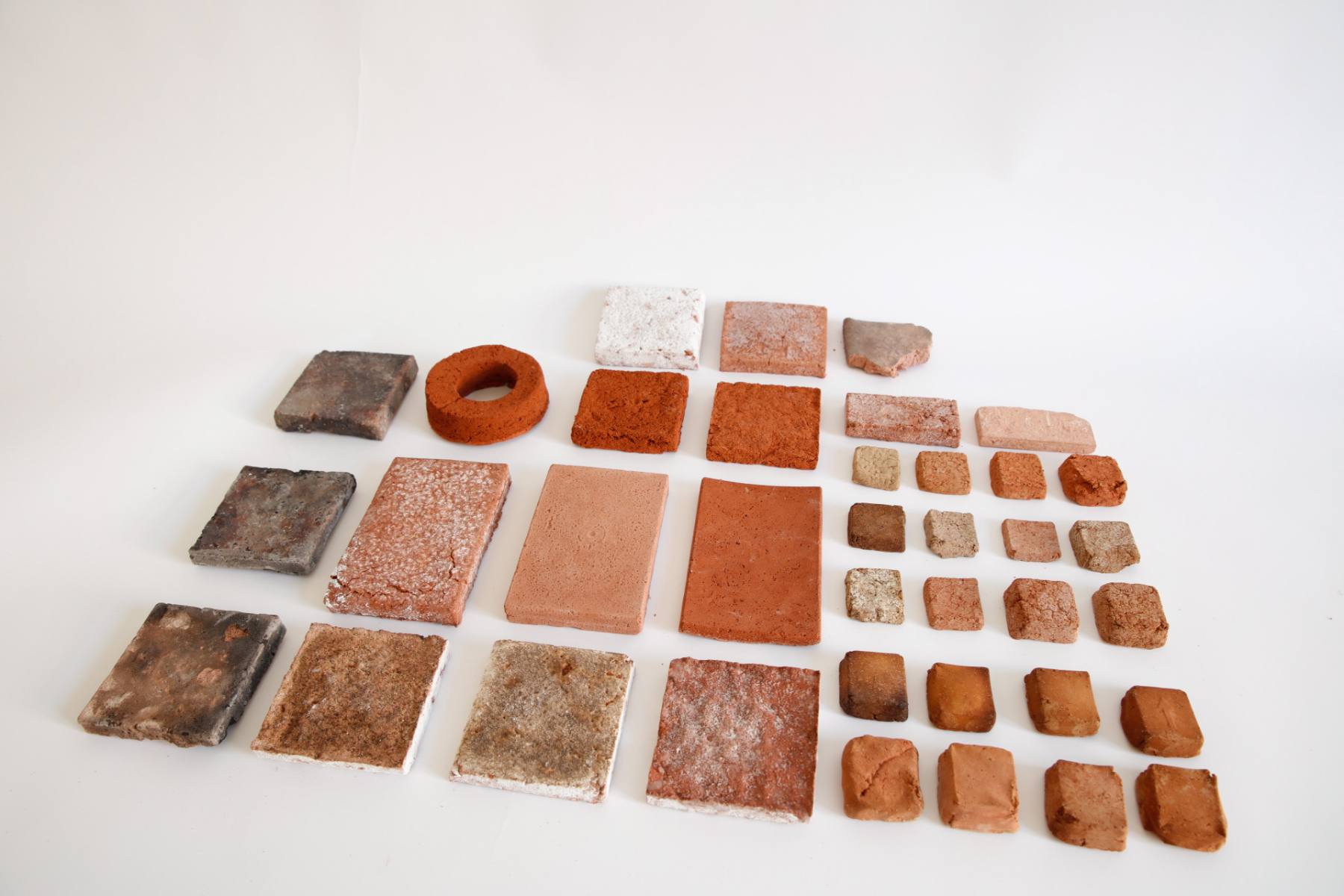
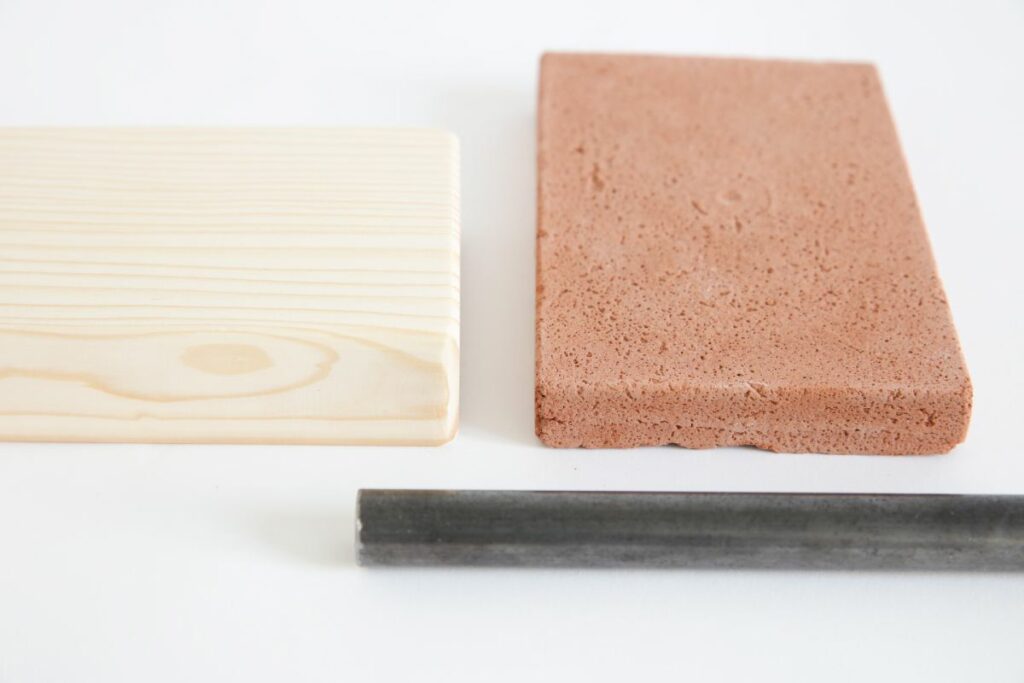
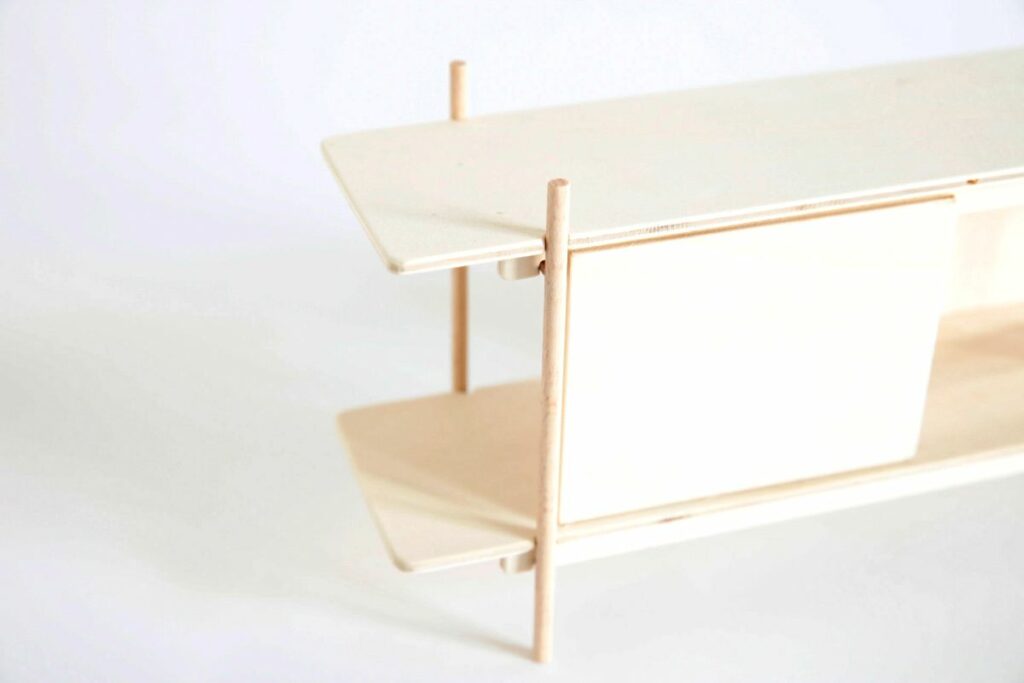
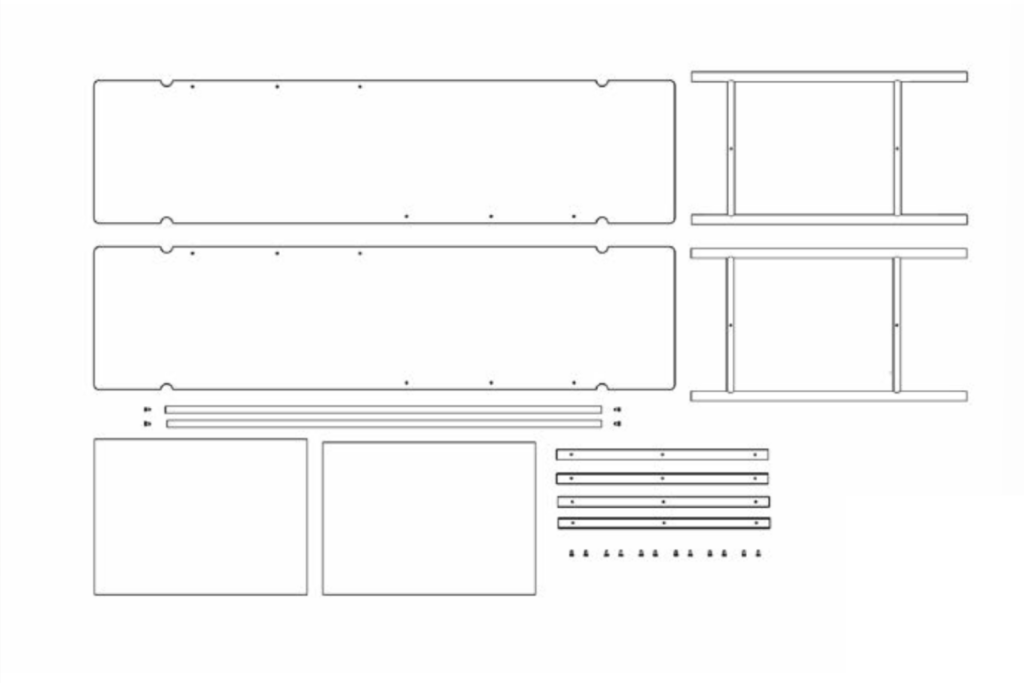
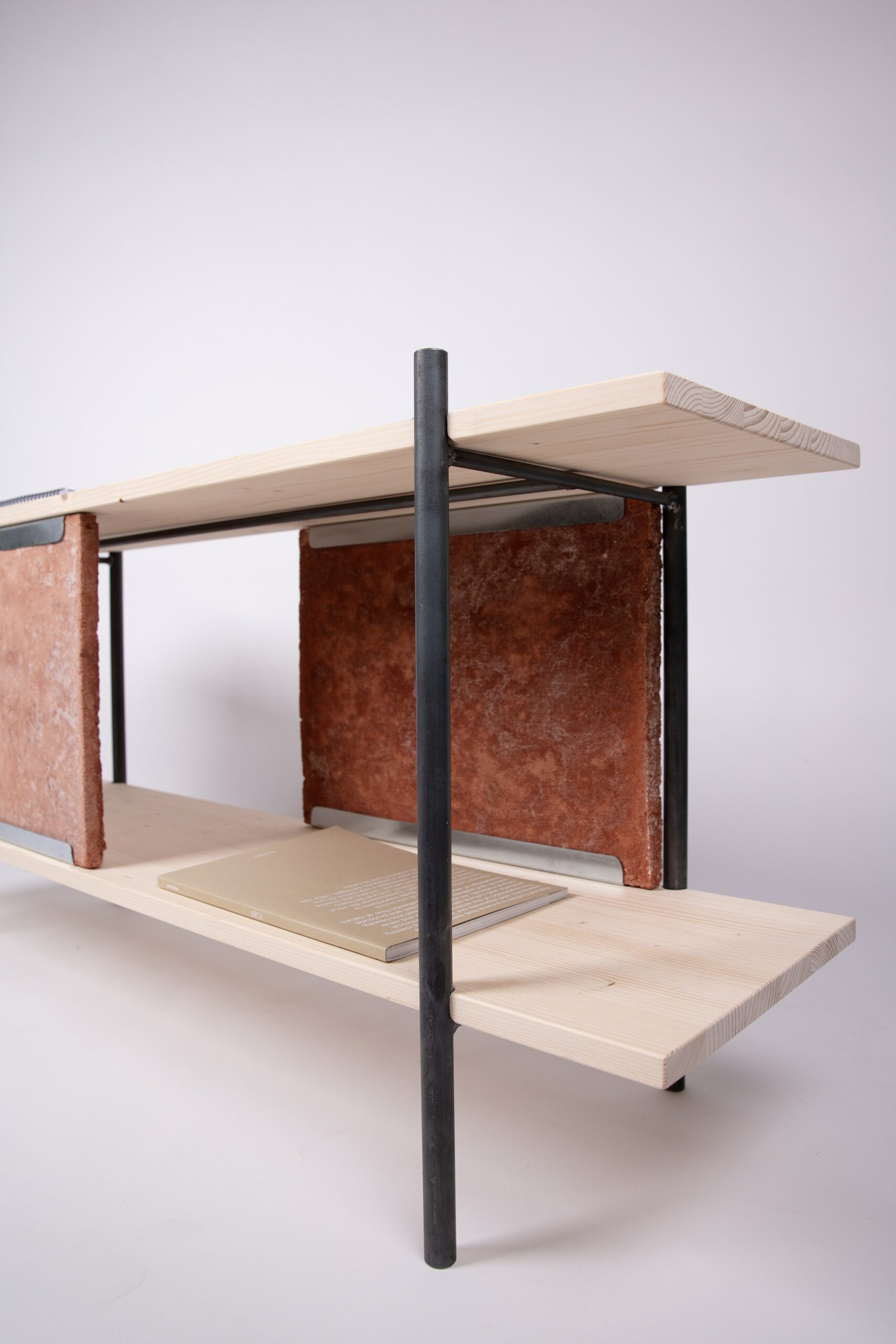
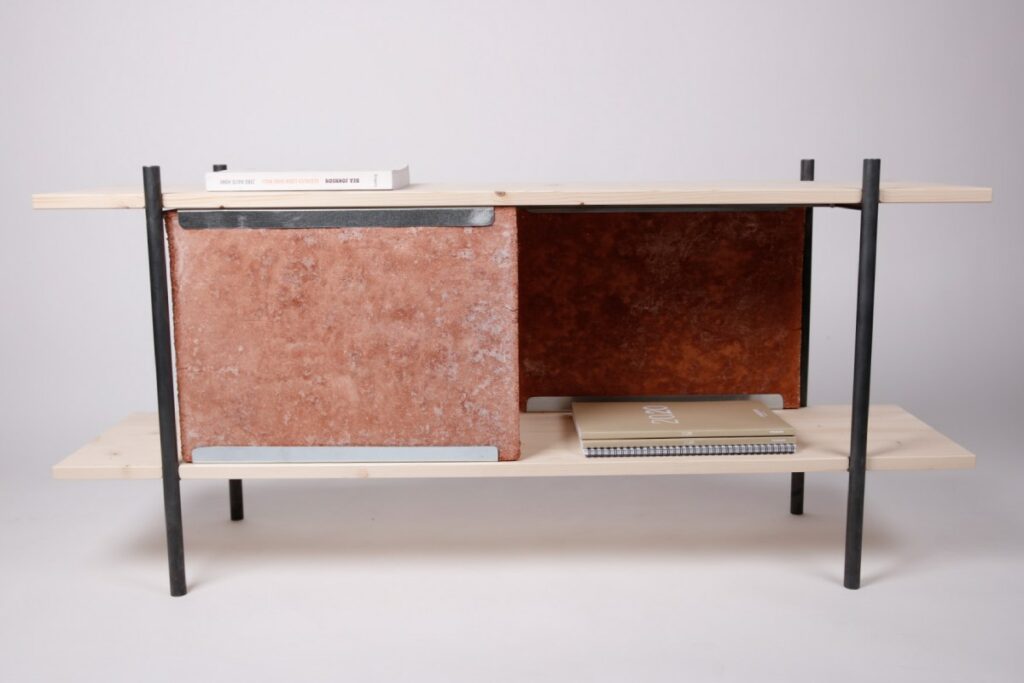
Laterem Lux – Franziska Rausch & Lea Matuschzyk (Industrial Design M.A. Medical Design)
Thinking of bricks in a different way, from hard and robust to soft and flexible.
In various test series, a translucent textile/fabric was developed, which gives the brick a completely new look and meaning. The resulting „brick foil“ is particularly convincing due to its translucent effect.
The properties of the „brick foil“ are used as examples in the lamp designs and are intended to open up usage scenarios. Through various finishing and processing techniques, the unique appearance is created, which is particularly apparent when the light falls on it.
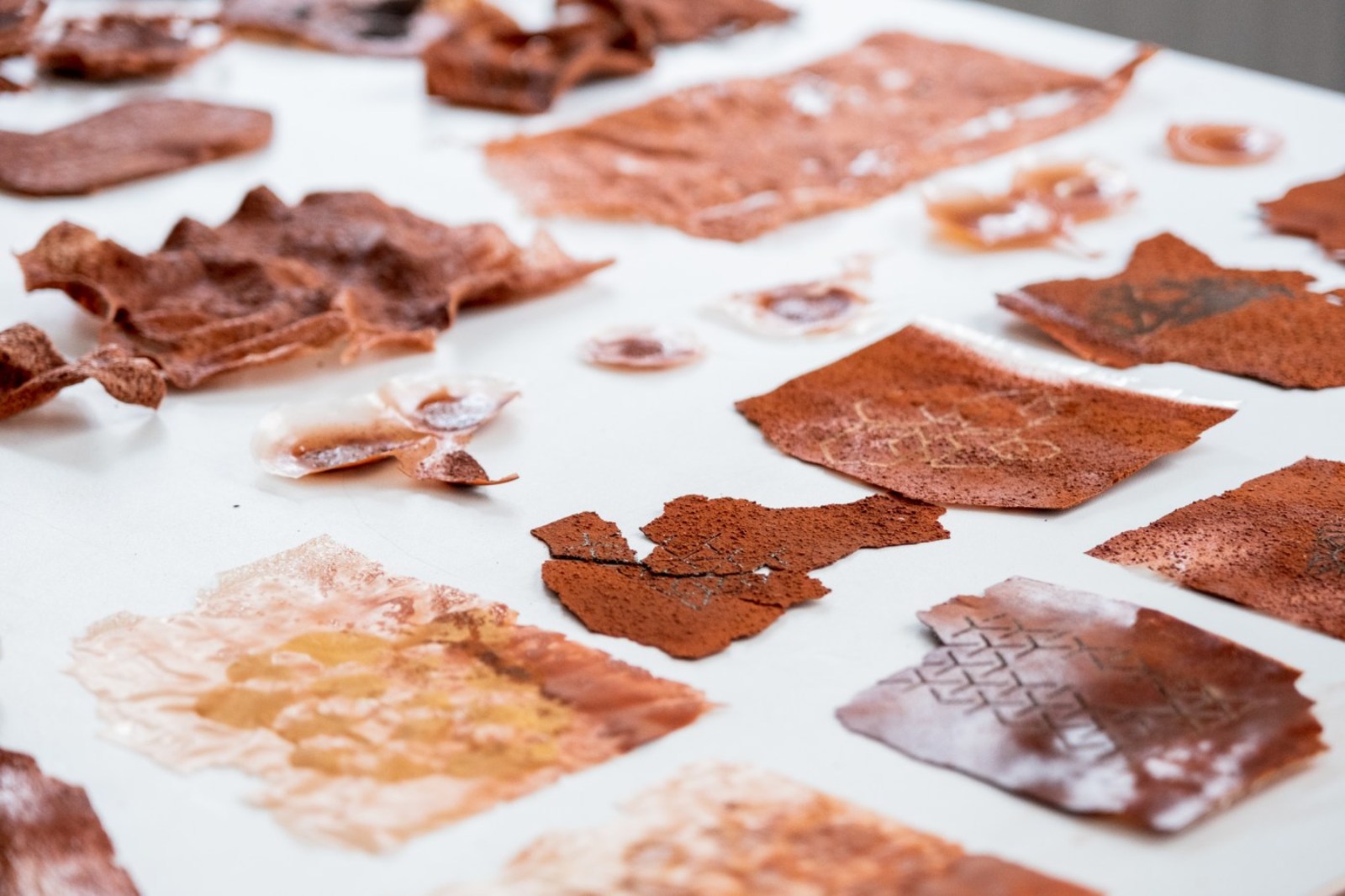
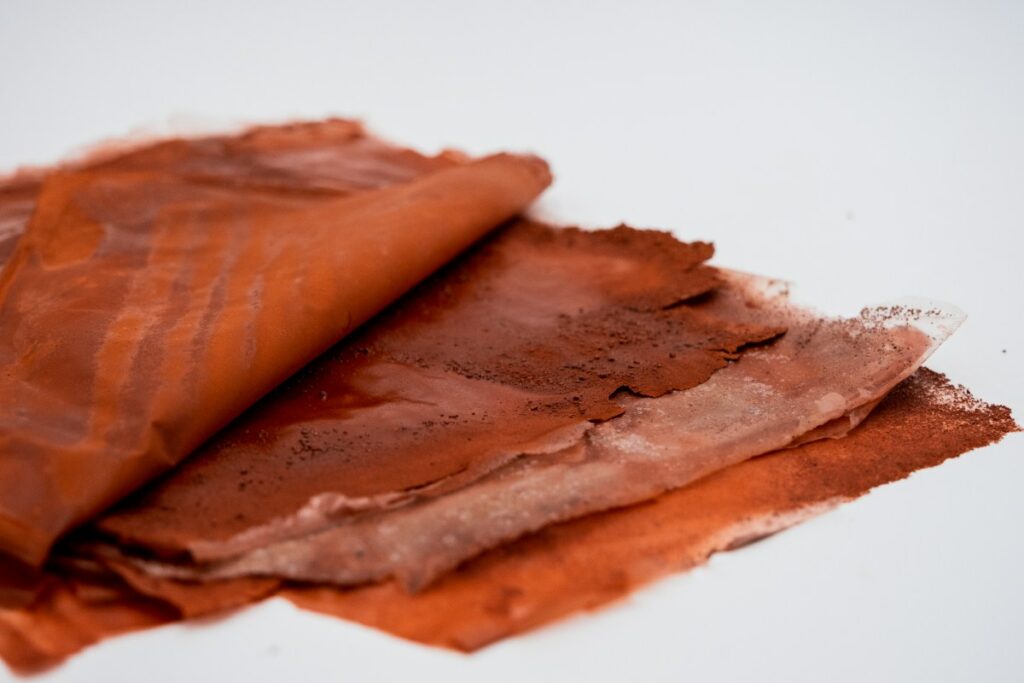
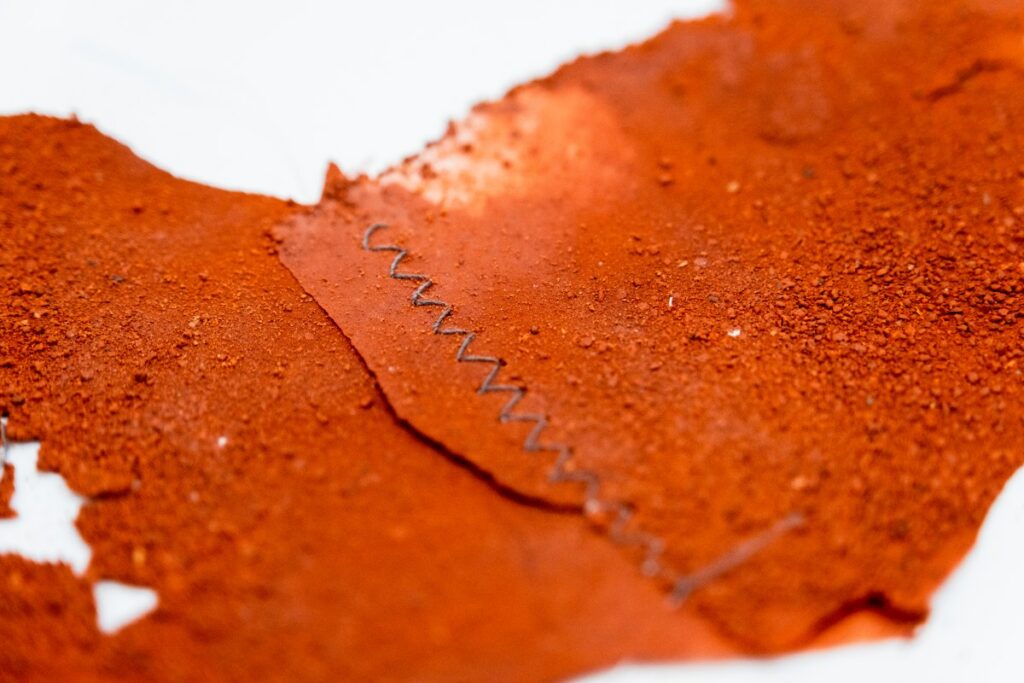
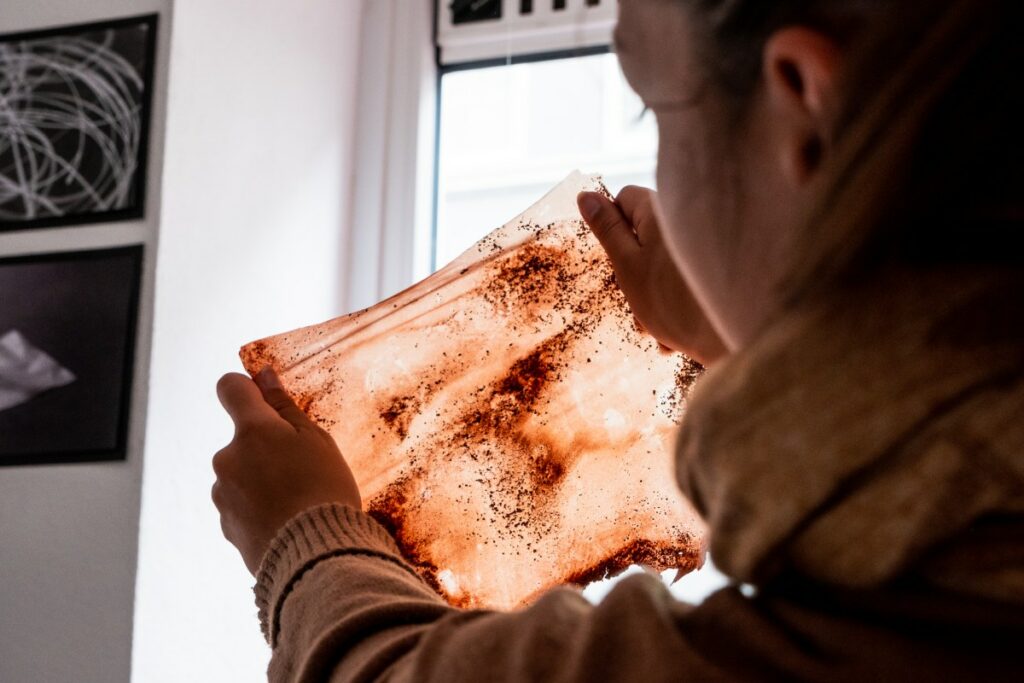
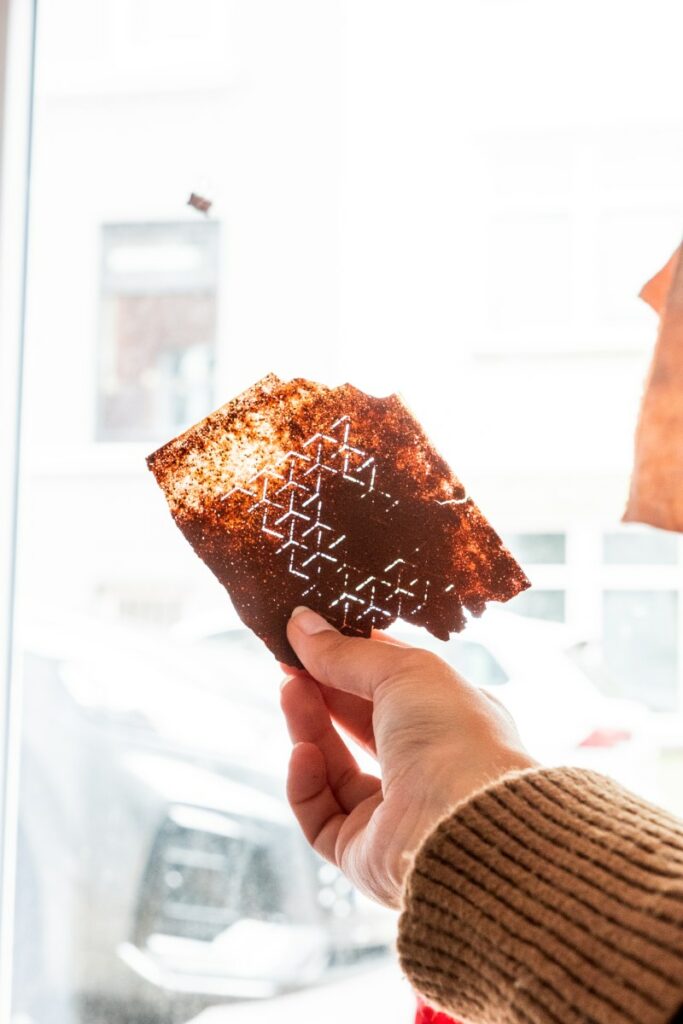
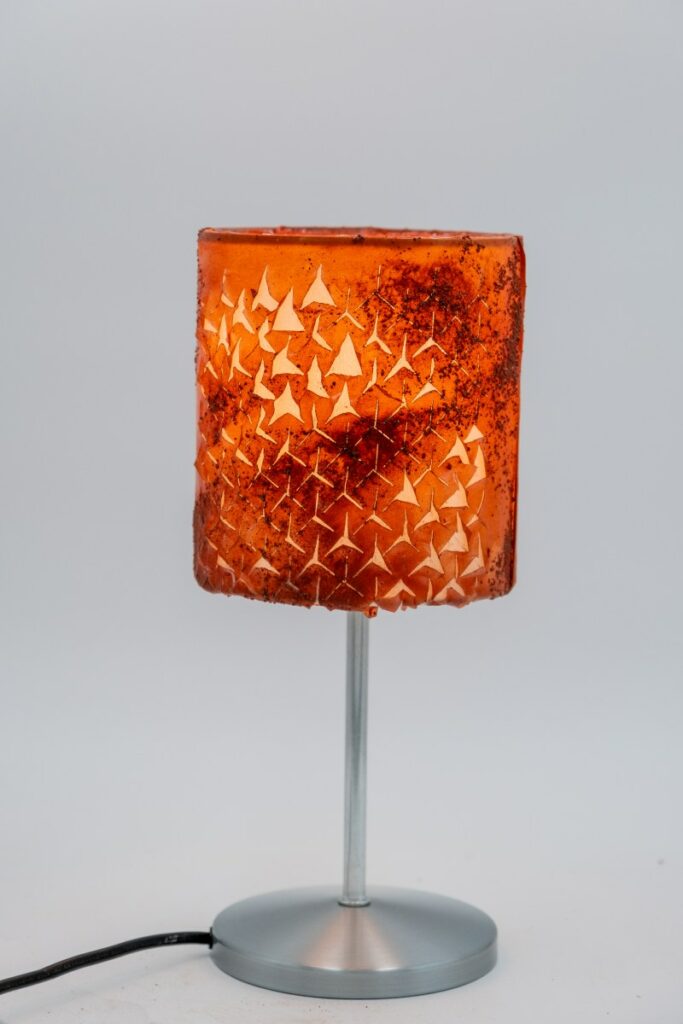
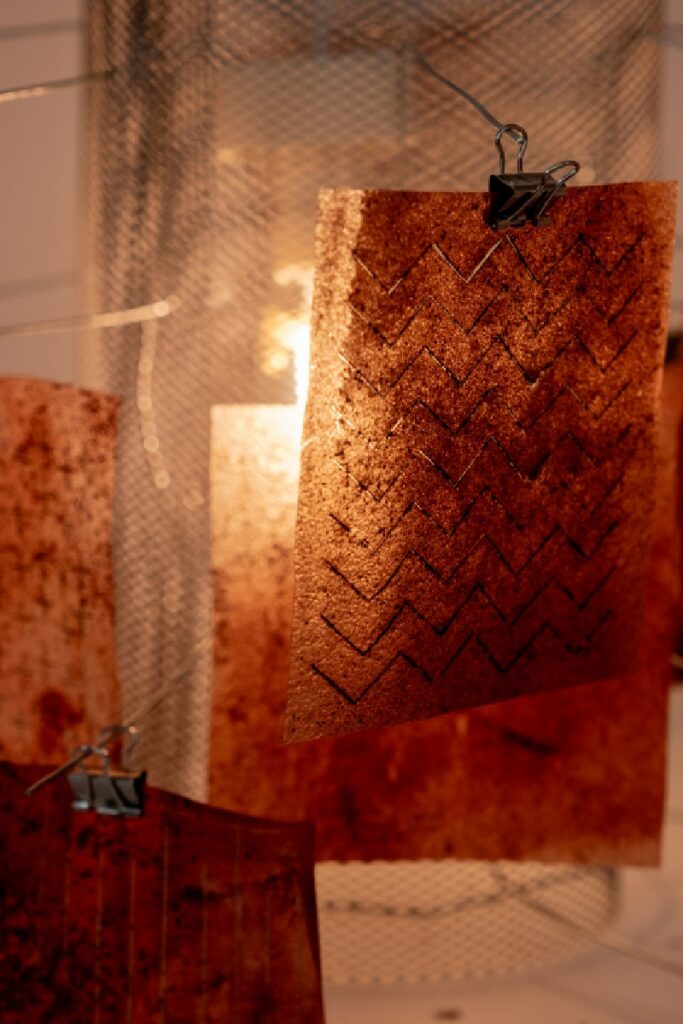
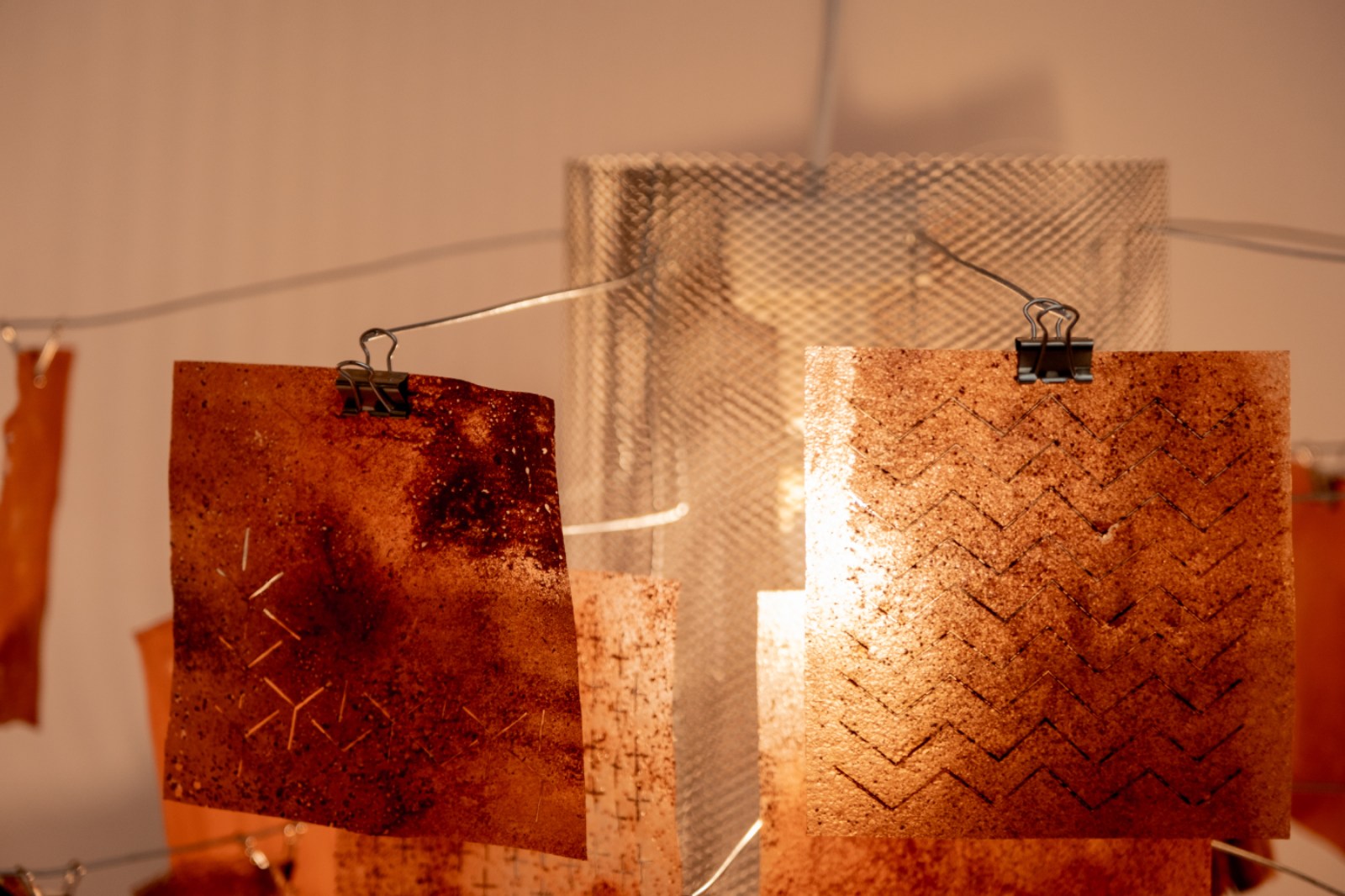
Corium – Franziska Rausch & Lea Matuschzyk (Industrial Design M.A. Medical Design)
A random product that convinces with its appearance and became a design object.
While experimenting and pursuing the goal of getting the brick soft, the brick was created as a „side effect“ from leftovers. This convinces by its clear design, haptics and sandstone optics. The „corium“ stands out from the familiar brick because of the lightness it conveys. It rounds off the design and can be thought of as a lamp base, but keeps other contexts of use open.
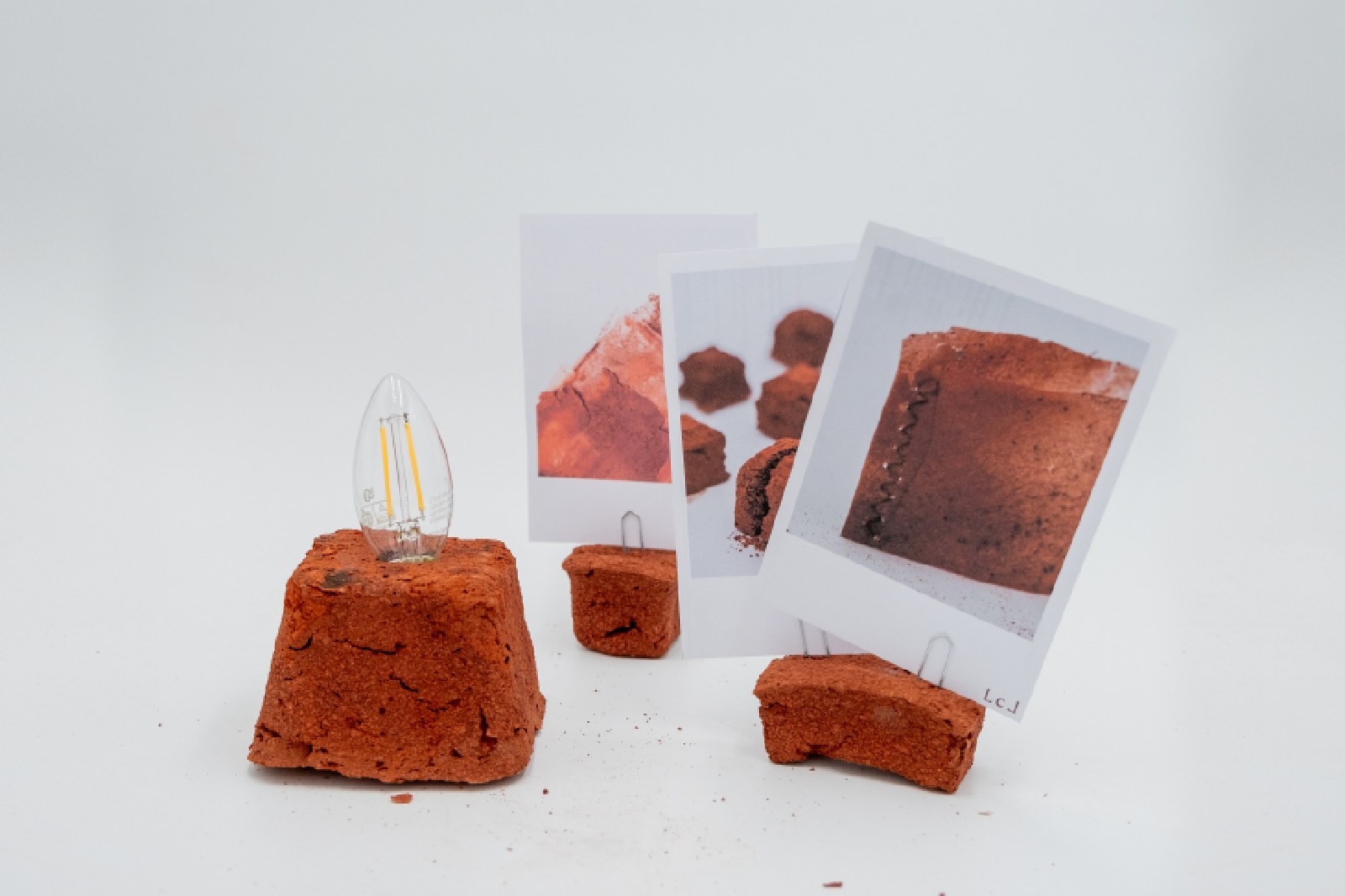
Brick Tones – Lotta Kunft (Industrial Design B.A.)
Grinding the brick residues produces a fine pigment that can be used in a variety of ways for colouring. Examples of applications are wood varnishes, wax crayons or textile dyes.
In the course of the project Lotta focussed on dyeing textiles and designed different pieces of clothing.
Based on different brickwork compounds she created experimental cutting patterns. The textiles have been dyed with different brick pigment colours and are representing the colour variety that results from the different bricks. The hard material and the geometry of the bricks form a strong contrast to the soft cotton fabrics and the organic form of clothing cutting patterns.
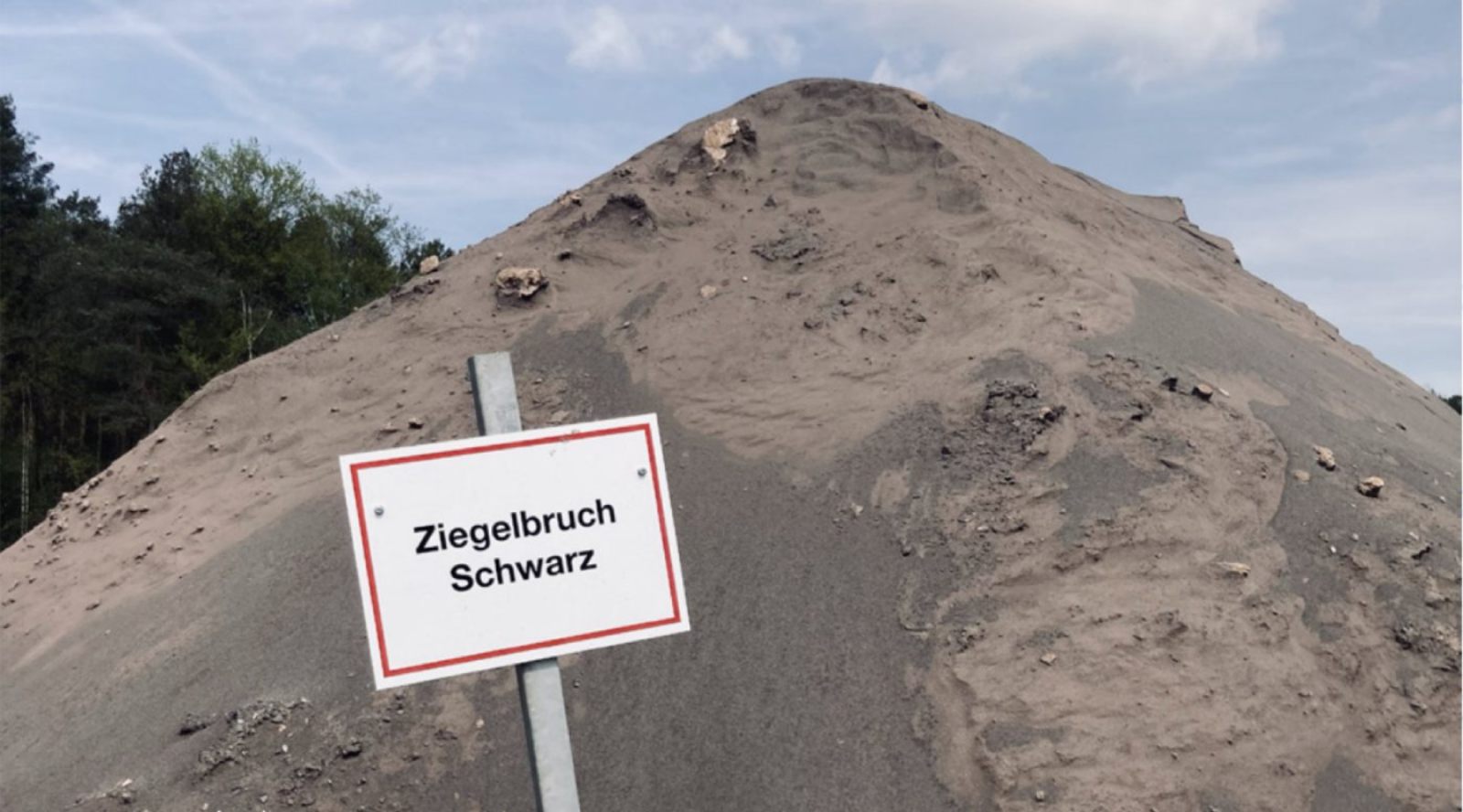
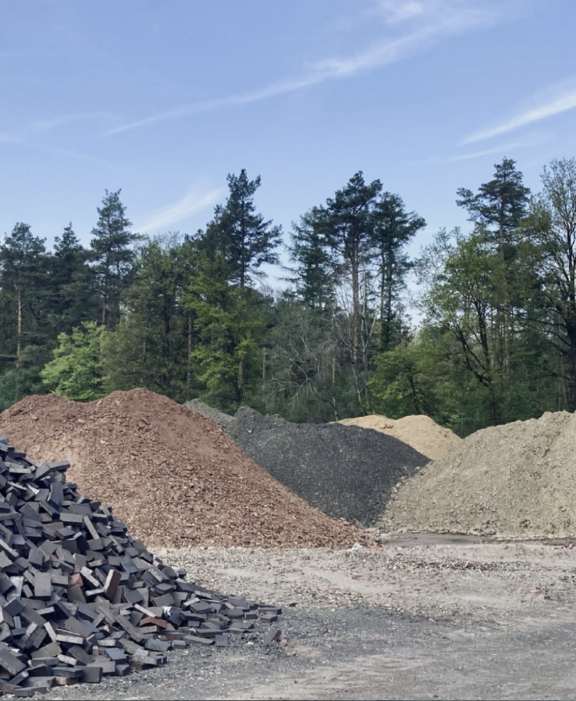
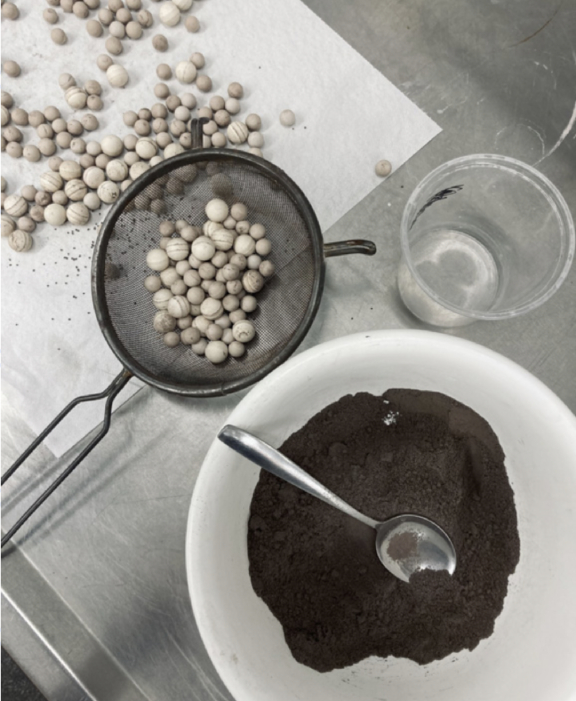
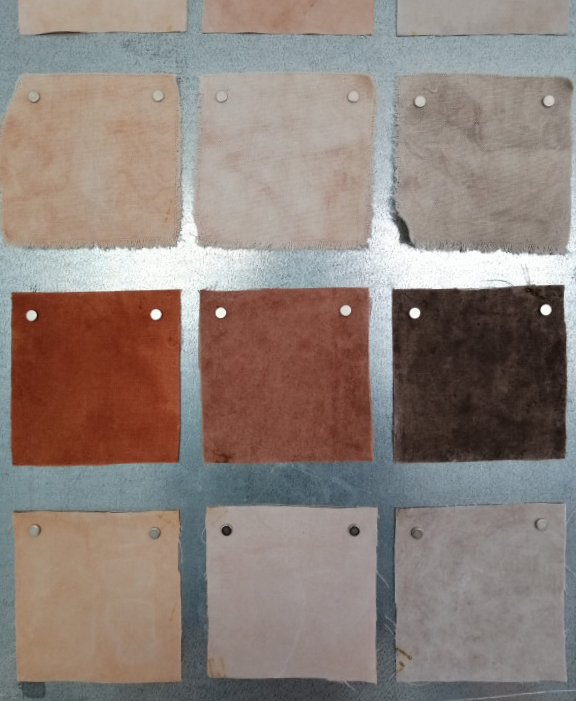
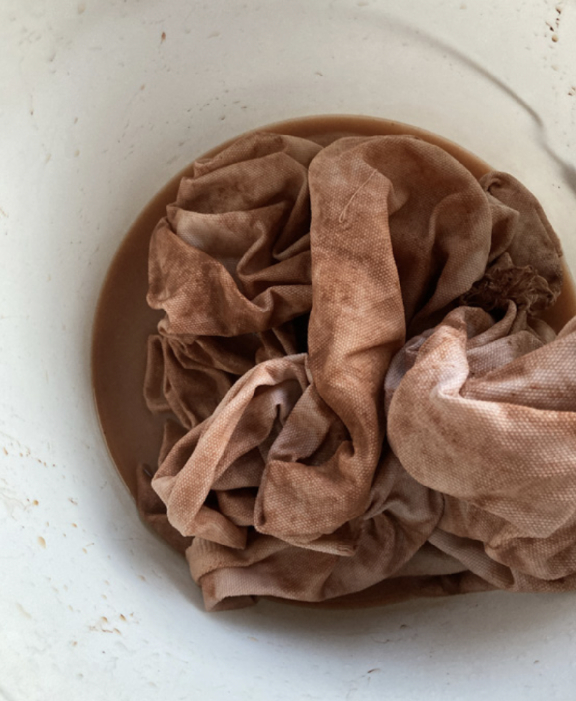
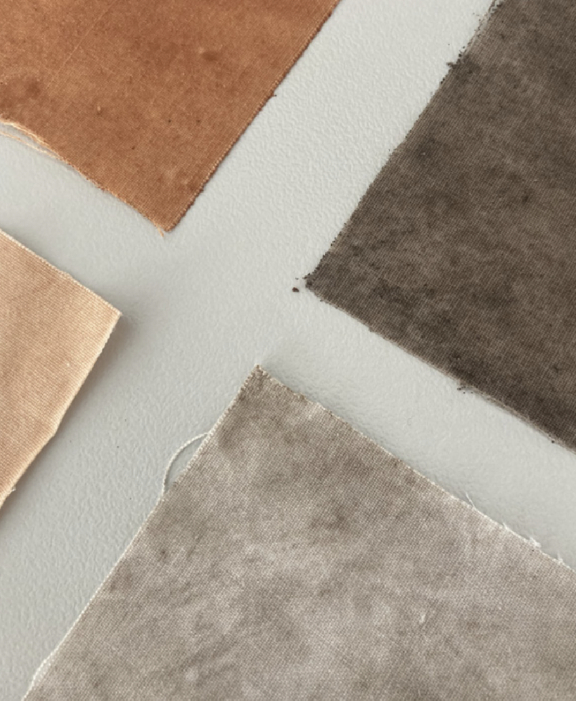
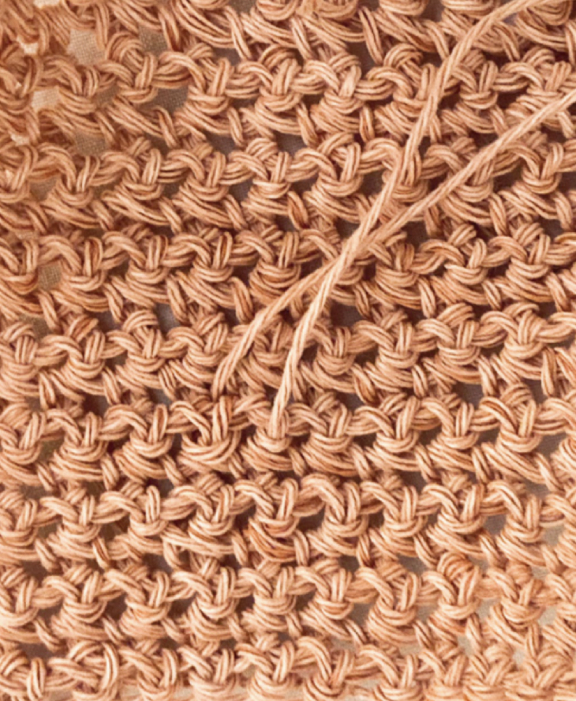
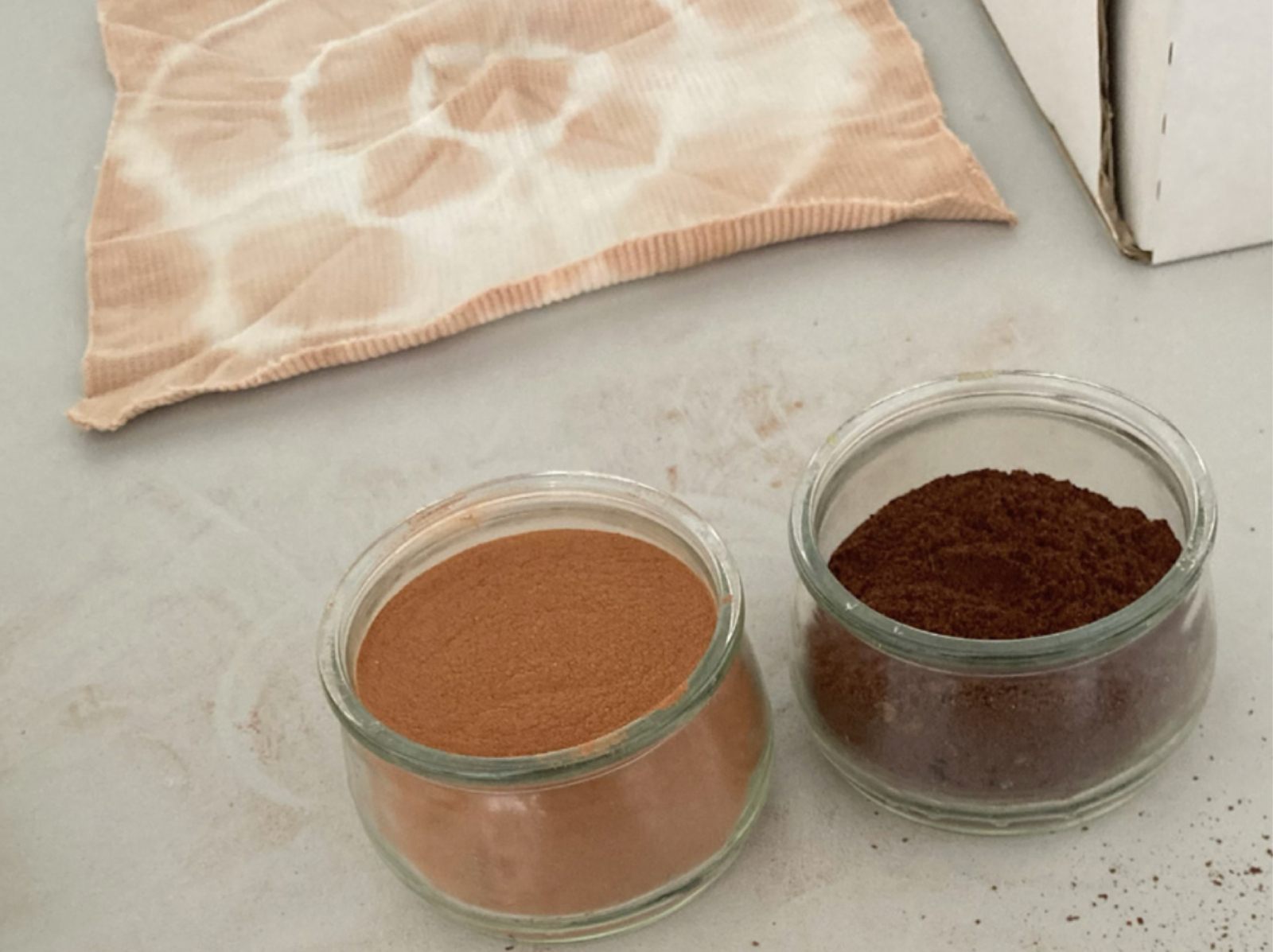
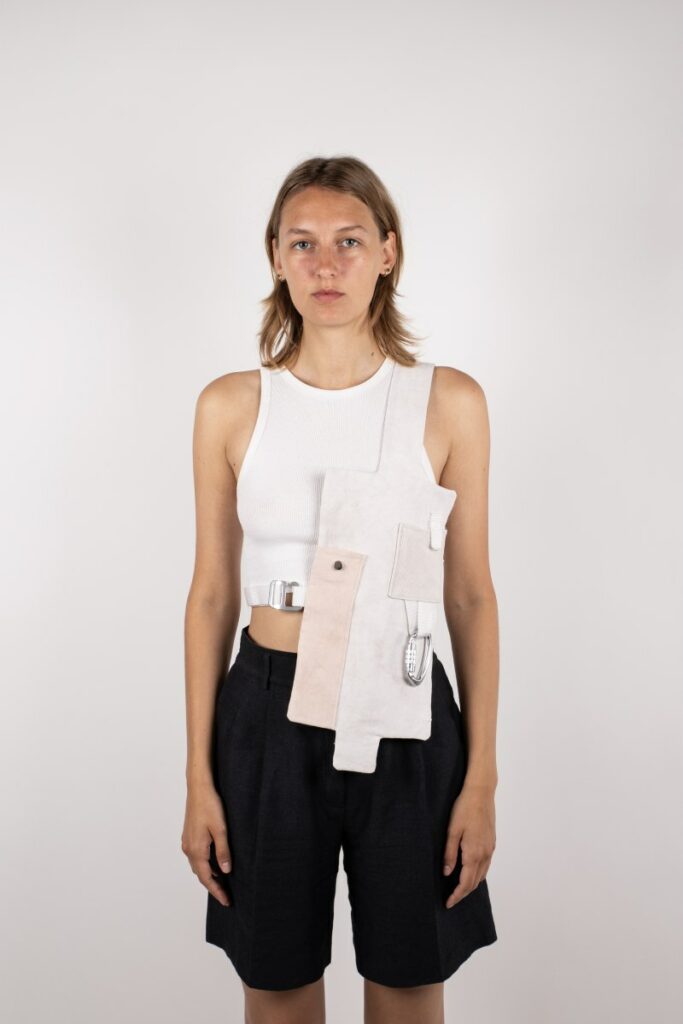
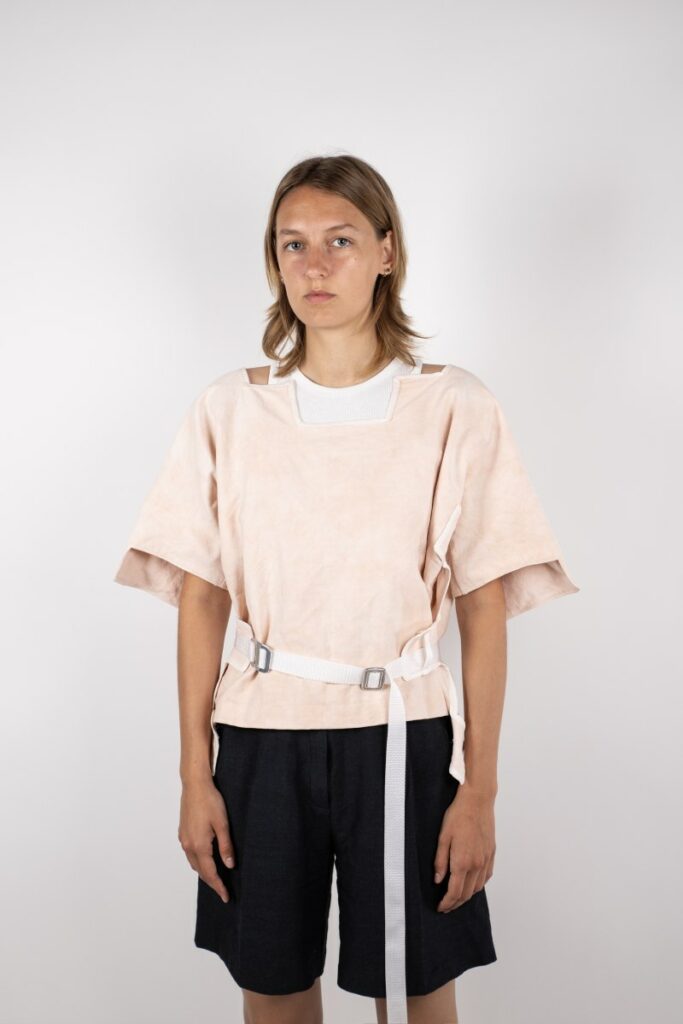
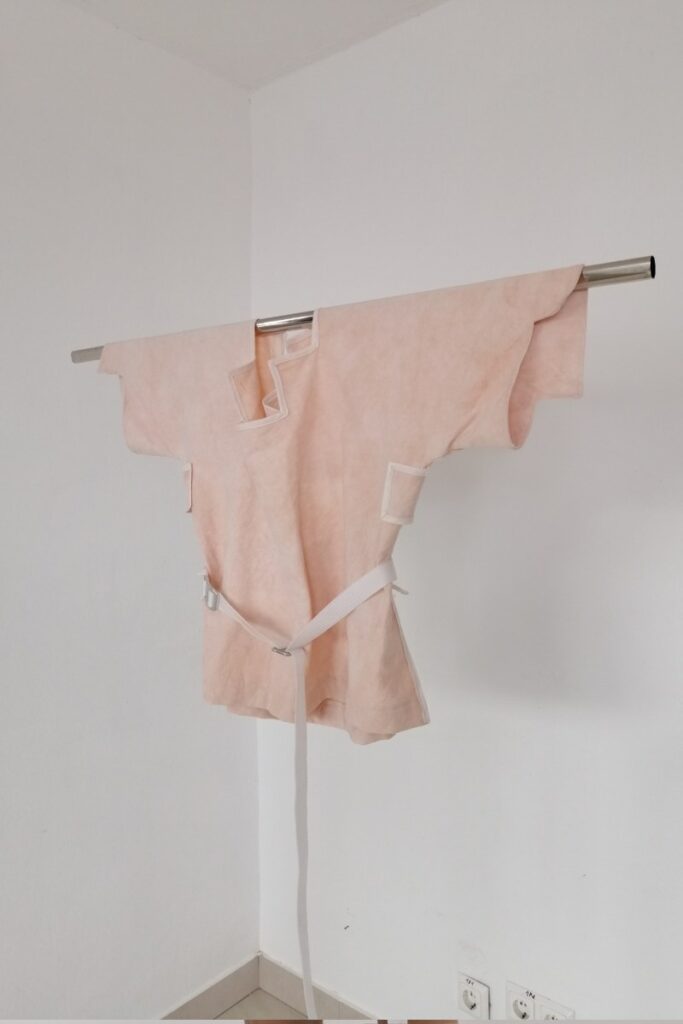
Vacuum Structures – Mads Lukas Duggen (Industrial Design M.A. Medical Design)
This project is dedicated to the experimental design and applications of vacuum-sealed residual materials from brick production and -recycling.
Through the process of vacuum sealing, these materials acquire remarkable strength. This characteristic presents intriguing possibilities. Foil and filling are not glued or bond together, allowing both materials to retain their original quality upon releasing the vacuum. A representative module has been designed, from which both small objects and temporary architecture could emerge. This module serves as a starting point for further creative design approaches and acts as a catalyst for the utilization of vacuum-sealed residual materials.
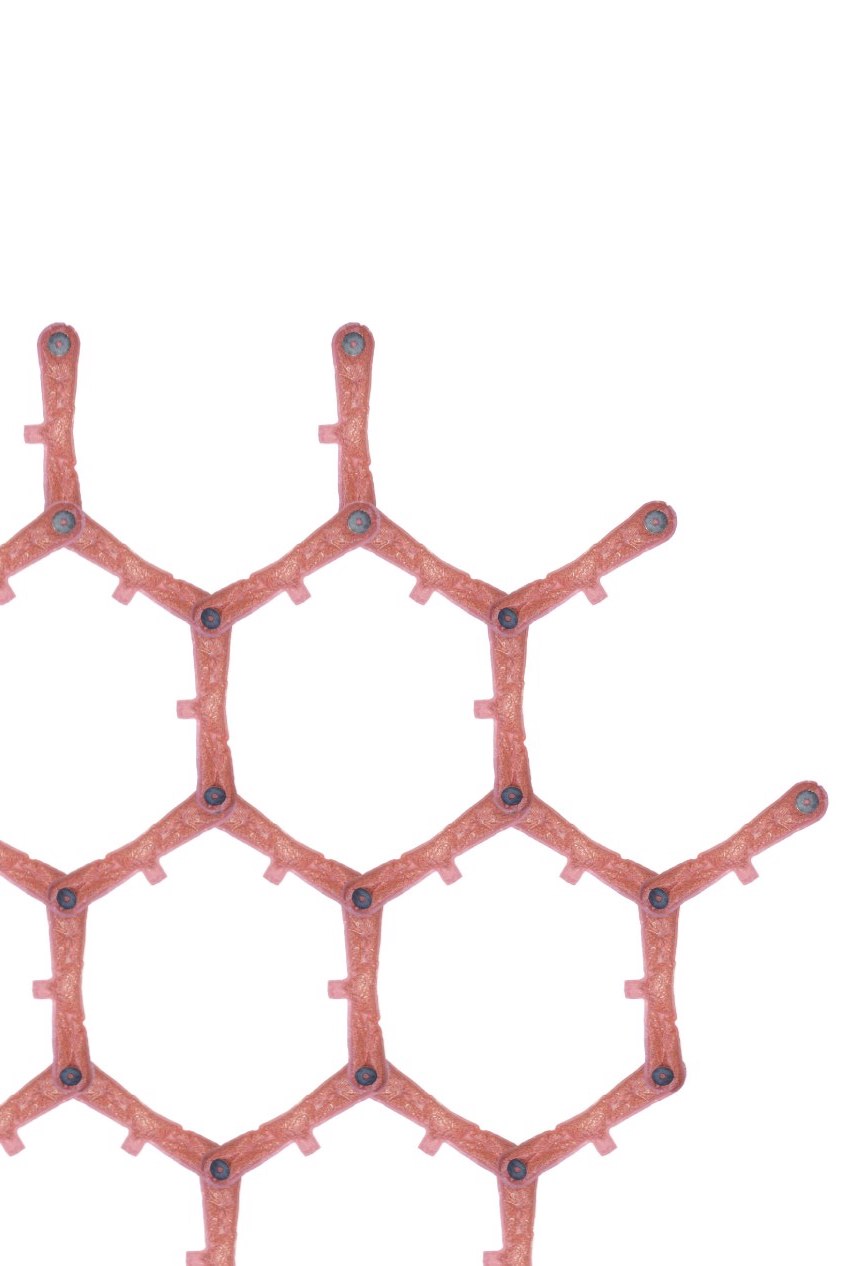
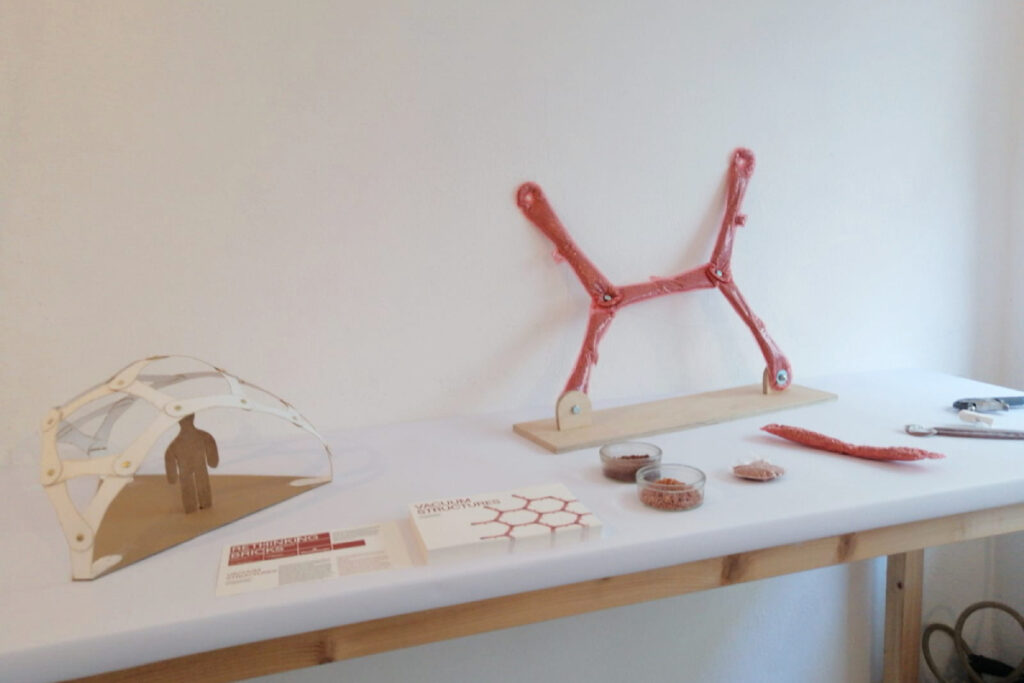
Ex_Tiles – Nazli Khosrowpour Taleghani (B.A. Spatial Strategies)
Ex_Tile is a concept for tile production and installation, based on the examination of the waste product brick dust.
Also it contains a little amount of cement: a mixing ratio of 6:1_ Brick dust: cement. You can find prints in them – prints of fallen fruit and technical devices found in a bulky waste.
The concept is based on a simple interchangeability of the tiles: individual tiles can be attached by means of magnets to a steel plate mounted on the wall. Thus, the arrangement of the tiles can be playfully changed without destroying them. Tiles removed can be a gift.
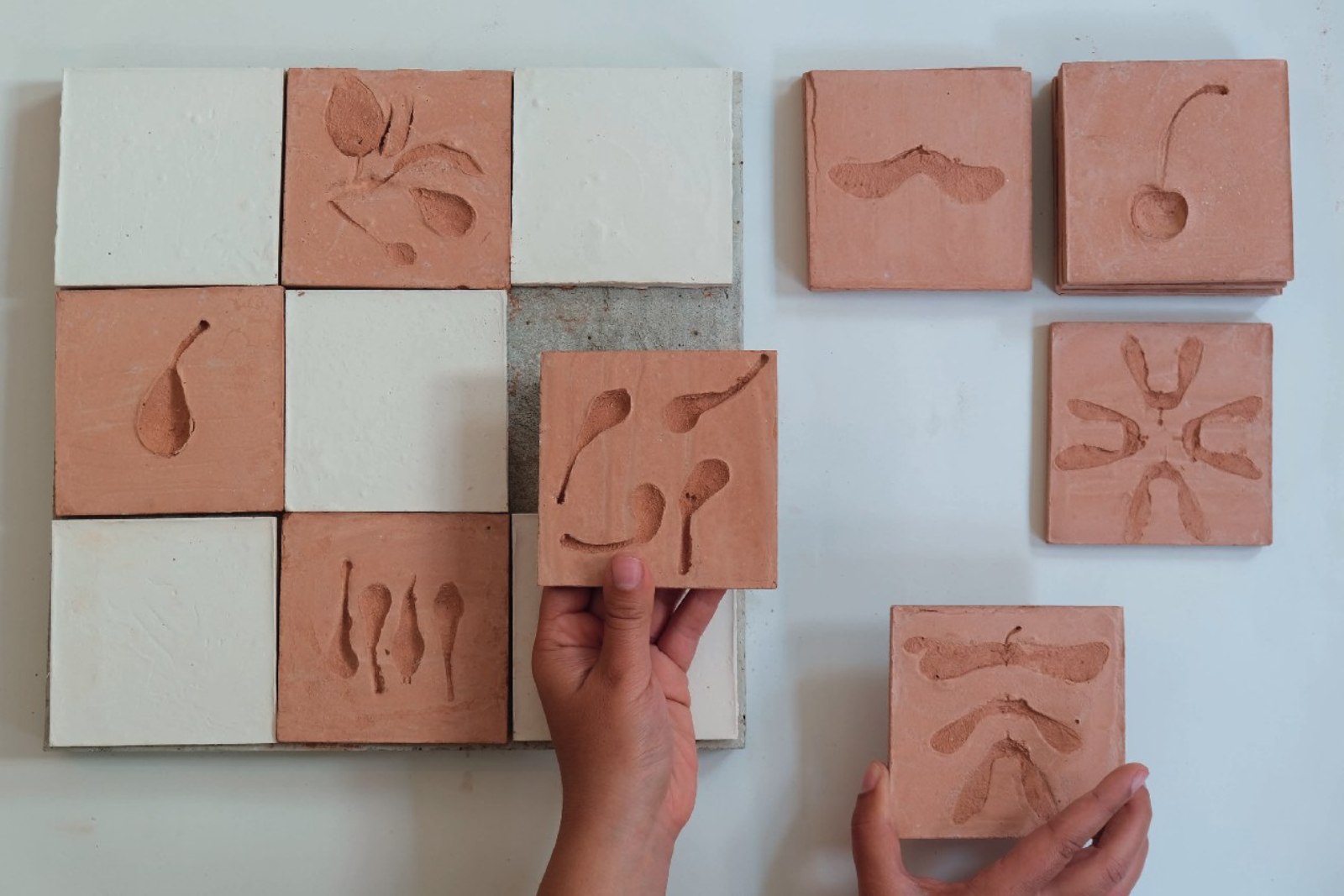
All works are displayed with the consent of the students.